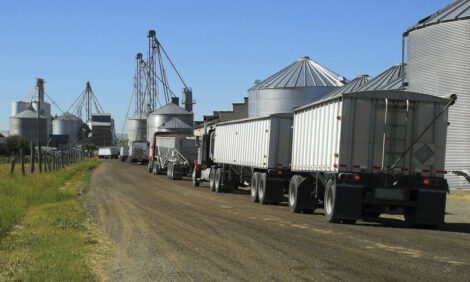



FAD expert fields questions of ASF diagnostic preparedness, surveillance and response
Effectively addressing a foreign animal diseases (FAD) such as African swine fever (ASF) will take a unified effort between the US pork industry and the local, state and federal government if the deadly virus enters the United States.ASF continues to be active in China, Russia and some parts of Europe. Paul Sundberg, DVM, executive director for the Swine Health Information Center, recently answered questions on ASF prevention, diagnostic preparedness, surveillance and response measures.
What is the status of ASF response planning?
USDA Animal Plant and Health Inspection Service (APHIS) has posted a disease-response strategy for ASF on its FAD PReP website. State animal health officials and the pork industry use this information to implement state-specific planning.
USDA also has committed to work with the industry to develop and host an ASF-specific exercise in 2019 to test key response functions that would be necessary for successful ASF management and containment. Exercise participants will include pork producers, swine veterinarians, packers and processors and allied industry. Invitations to participate will be sent to officials in Canada and Mexico.
What is the status of laboratory capacity for ASF testing should the US face an outbreak?
APHIS has approved 11 National Animal Health Laboratory Network (NAHLN) laboratories to test for ASF. At the current laboratory capacity, 6,500 PCR samples could be run per day. Capacity could be increased to 8000 samples per day with additional proficiency tested staffing. USDA’s Center for Epidemiology and Animal Health is determining the sample size needed for testing if the US experienced an outbreak.
USDA has identified another 22 laboratories that would like to add ASF to their approved tests and competencies. These laboratories could potentially add capacity for another 9,000 tests per day if approved.
Whole blood is currently the only approved sample type for ASF testing in NAHLN laboratories. However, as of Oct. 1, tonsil tissue, which is a validated sample for ASF testing at USDA’s FAD Diagnostic Laboratory (FADDL), will be approved for use in NAHLN labs for FAD investigations.
USDA is in the process of validating oral-swine fluids for ASF testing. Validation steps for use in an outbreak include evaluation of positive samples from experimentally infected animals and testing of field outbreak samples. USDA’s Veterinary Services are expected to complete the first step by March 2019 and determine the analytical sensitivity and specificity of the assay, and subsequently guide deployment of the assay in the case of a US outbreak. At industry’s request, USDA is evaluating costs and utility of adding spleen tissue as an approved sample for ASF testing in NAHLN laboratories.
What is the status of ASF surveillance in the US?
Currently, there is only a passive-surveillance system for ASF early detection that relies on producers or veterinarians reporting suspected ASF cases to state or federal animal-health officials. USDA piloted an active-ASF program using the approved sample, whole blood, which was similar to the classical swine fever surveillance program. USDA is modeling surveillance needs, including developing a revised case definition for sick pigs and identifying the best surveillance streams for early disease detection. USDA has agreed to start testing tonsils from case-compatible submissions in the NAHLN for FAD investigations effective Oct. 1. Cost estimates are being developing to add additional samples, such as spleen, to determine budget requirements. USDA also is exploring the prospect of testing case-compatible samples taken from sick pigs observed at licensed plate-waste feeding facilities during their regular inspections.
Can USDA sign regionalisation agreements with trading partners in advance of an outbreak?
USDA and Canada have signed an agreement to recognise their respective regionalisation plans in the case of an FAD outbreak. USDA will consider working with other trading partners on more proactive agreements, but the process is resource intensive and will take considerable time. There is additional complexity with these negotiations since the US has not had an FAD outbreak in decades. As a result, US capabilities to regionalise for swine diseases has not been demonstrated.
How will USDA dispose of animals culled during an outbreak?
Each state will need to develop its own disposal plan. Producers should work with their State Animal Health Official’s office to consider site-specific disposal plans.









